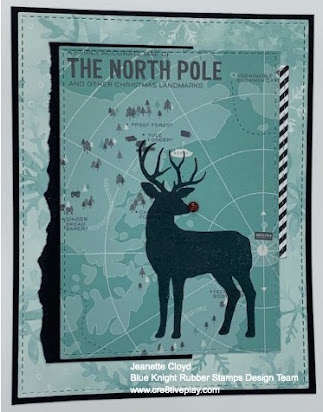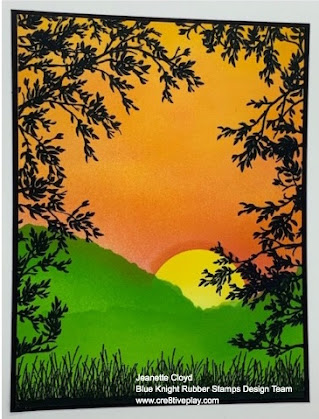I started a 50-week series in 2019 that I called Travel the World. Each week of the series I visited a randomly-selected country, sharing bits of information about that country. I then chose one tidbit of information about that week's country as inspiration for a card. As I explored those 50 countries in 2019, I knew I would continue on until I've visited every one of the 195 countries in the world, so I continued the series in 2020 and here I am in 2021, the third year of traveling the world.
This week's country is...
Dominican Republic
The Dominican Republic is located in the Caribbean.The Dominican Republic only has one bordering country, Haiti, with which it shares the Hispaniola island. The two countries have a land border of 233 miles.
Before Haiti and the Dominican Republic were formed, the island was a single nation called Hispaniola. Today, Haiti occupies the western three eighths of the island, while the Dominican Republic occupies the eastern five eighths.
The size of the Dominican Republic is roughly double the size of New Hampshire.
The Dominican Republic is the most visited destination in the Caribbean. About five million people visit it every year. The majority of tourists come from the US and Canada.
It is also a popular destination for honeymoons.
The idyllic climate of the Dominican Republic lasts all year long: it is mostly warm and sunny, so it is known as an "endless summer".
Puerto Plata features the only cable-car system in the Caribbean.The Dominican Republic is the 86th most populous country in the world.
The official language of Dominican Republic is Spanish.
The capital city, Santo Domingo, has a rich history. Founded in 1496, it’s the oldest European settlement in the Americas.
The Dominican Republic is home to the oldest Cathedral in the Americas. Catedral de Santa Maria La Menor celebrates its 500th anniversary this year. In 1514 Christopher Columbus’s son laid the first stone for this cathedral. Since then, it has survived everything from pirate attacks to earthquakes.Baseball is a national pastime and a great source of pride. Boys often dedicate their childhoods to this sport, hoping to play in the big leagues in the US. Almost 40 percent of players in US leagues come from the Dominican Republic. Thousands of Dominican boys believe that baseball is their only path out of poverty, leading them to drop out of school, follow manipulative scouts, and even resort to steroids.
The Dominican Republic is also a popular golfing destination, it has many courses along its coast.
Dominicans are famously not punctual, arriving late to a meeting is the norm on the island.
Merengue is a style of dance developed in the Dominican Republic. Its quick dance steps are matched by equally fast-paced music.
Dominicans are known for their loyalty and their commitment to their family. As a result, many people in the country prefer living in joint and multi-generational families.
Dominicans eat patriotic food. La Bandera, meaning “the flag,” is a traditional meal of stewed meat, red beans, and rice. It’s served regularly in Dominican households.
Tostones (tos-TOE-nays), which are small, fried plantain patties, are often a side dish at meals. (Having been to the Dominican Republic where I've eaten tostones on more than one occasion, I can attest to their deliciousness.)
The national drink of the Dominican Republic is coffee.
The Dominican flag is the only flag in the world that uses the image of a Bible. This coat of arms is at the center of the flag.
25% of the Dominican Republic’s land and shoreline are preserved as national parks, reserves, and sanctuaries.
The Dominican Republic is the only place in the world where the blue, semi-precious stone called larimar is found. It most closely resembles turquoise, and it is called “larimar” because it resembles the color of the Caribbean Sea.One of the main industries of the Dominican Republic is sugar refinery.
The Dominican Republic mostly relies on exports of coffee, cocoa, sugar and tobacco to fuel its national economy.
The Dominican Republic is the 10th biggest cocoa manufacturer in the world.
The Dominican Republic produces 55% of the world's banana market. Bananas are mainly produced in the North West and in the South of the country.
The Dominican Republic was a popular location for pirates in the 17th century, as many people were recruited to pillage Spanish ships full of treasures.
The Dominican Republic is located on a beautiful island with sandy beaches, forests, and plenty of interesting fauna and flora. Between December and March, you can spot humpback whales on the shores of the Dominican Republic.
The rhinoceros iguana, a species of lizard threatened with extinction, can only be found in the Dominican Republic.The Dominican Republic is home to over 300 species of birds. Some are unique to the island, such as the Hispaniolan Trogon, the Hispaniolan Emerald or the Broad-billed Tody.
The national tree of the Dominican Republic is the West Indian Mahogany.
More than 50% of the land of the Dominican Republic is used for agriculture and 40% is covered by forests.
The Dominican Republic is home to the largest lake and the lowest elevation point in the Caribbean, called Lake Enriquillo.
Lake Enriquillo is home to about 400 species of American crocodile.
In traffic jams, it is normal to honk your horn as loud as possible in the Dominican Republic.
Dominicans are often very religious. It is quite common to see signs saying "God has blessed this business" on shops.
My inspiration for this week's card is based on this fact about Dominican Republic... The Dominican Republic is home to a large number of Caribbean flamingo, commonly called red flamingo.
Thanks for stopping by my blog today!
Stamp Set: Whimsy Flamingo Fun stamped with Memento Tuxedo Black Ink and colored with Copic MarkersPaper: Neenah 110# Solar White and SU Balmy Blue CS and DP from my scrap file
Dies: MFT Stitched Rectangles, Paper Roses Stitched Circles, and Simon Says Sentiment Labels
Embellishments: Gina Marie Clear Enamel Dots




































































